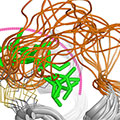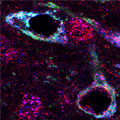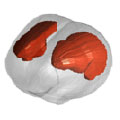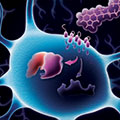Featured Paper of the Month – May 2020
Published in Elife by Lane, Robert J; Abramyan, Ara M; Adhikari, Pramisha; Keen, Alastair C; Lee, Kuo-Hao; Sanchez, Julie; Verma, Ravi Kumar; Lim, Herman D; Yano, Hideaki; Javitch, Jonathan A; Shi, Lei
Lane et al. proposed that different types of antagonists could prefer specific types of inactive conformations of the dopamine D2 and D3 receptors. Based on the structures of these two receptors, the conformations of D2 bound with the drugs risperidone and eticlopride (two dopamine antagonists) were simulated and compared. The results show that the inactive conformations of D2 were very different when it was bound to eticlopride as opposed to risperidone…










